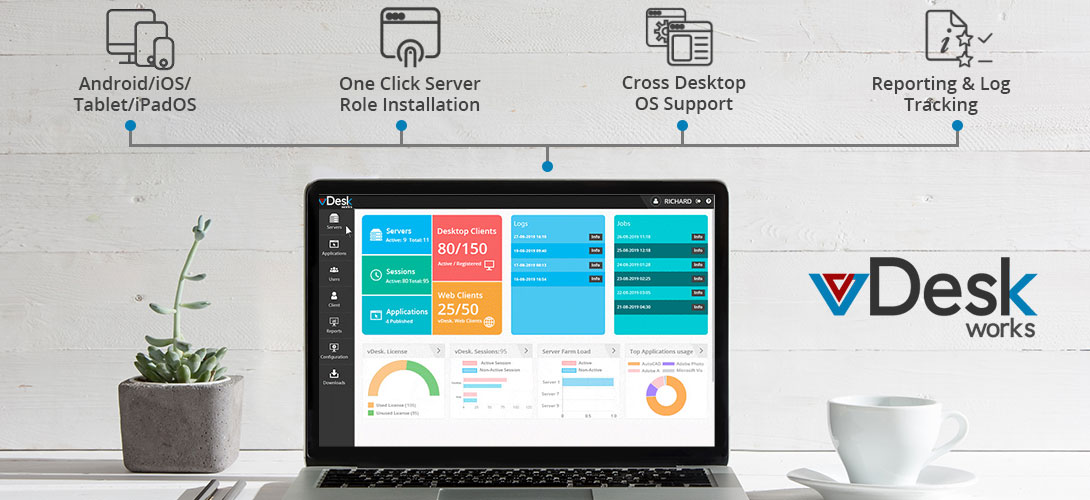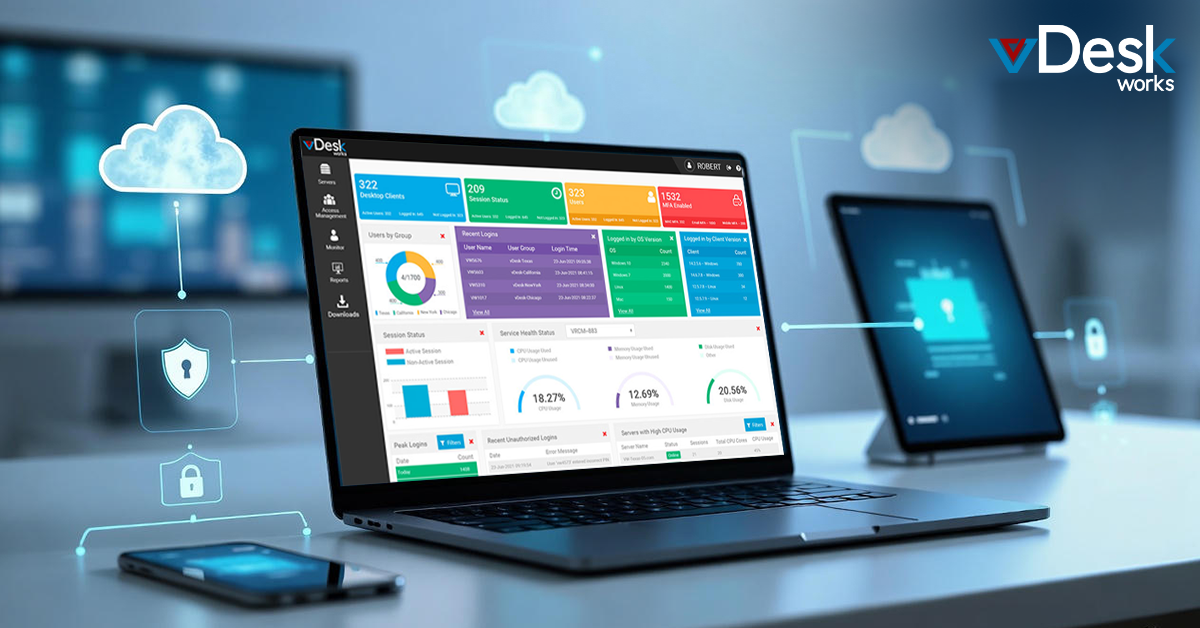If you are planning to invest in Desktop as a Service (DaaS), you’ll need to consider some key points: whether you need it, the costs versus the benefits, and what area of your infrastructure to virtualize, etc.
Another exciting aspect to consider is, evaluating which is the best application delivery method. Hence, we are taking this conversation one step further by deep diving into what should be considered, from an application delivery perspective, when moving to Virtual desktop cloud infrastructure.
We will discuss seven building blocks of an efficient application virtual desktop solutions delivery model.
- 1. Identify the Value Chain Framework
In this framework, it is crucial to identify the enterprise value chain, starting with the data center to the endpoints where end users use the applications to deliver a valuable product. What this means is how the portfolio of applications can be segmented into different categories of users, i.e. expert users, mobile users, transaction users, etc., where it requires identifying all the critical aspects and paths for each of the user’s profile. - 2. Application Management
To identify the value chain requirements, management at the application level will need to be closely followed. Within the operations segment, data centers and networks are managed where endpoints are always monitored and managed to ensure the devices are up, operational, and functional where it doesn’t negatively impact application performance. With DaaS & VDI Azure, it provides manageability for each components of the application delivery value chain framework, regardless of the changes in the manageability paradigms. - 3. Monitoring
It's a real-time and proactive approach to ensure application optimization and performance, with no impact, to provide end users with continued productivity. Currently, organizations’ monitoring performance at the unit level, and if not carefully monitored, can lead to business disruptions. With DaaS & Azure VDI's monitoring, it’s a comprehensive approach that ensures your systems are equipped to proactively guard and to identify issues before they negatively impact end users, which may alter the application delivery. - 4. Skills Realignment
Generally, within an enterprise architecture, every component has a specialist managing and monitoring it, and most of the time, their architecture and its components work in silos. With this approach, the optimal component level performance reporting may be misconstrued without actually accounting for the total impact of the performance at the service levels. From a VDI standpoint, a robust incident management process is vital to the organization’s success. - 5. Centralization
This is among the most fundamental building blocks of VDI, from an application delivery perspective. It ensures that the support skills are centralized, given that the logic controls have moved to a central location where endpoints are dumb terminals. With this approach, it allows the application delivery the ability to centrally manage, monitor and support applications, along with their uptime/downtime. - 6. Security
In a conventional application delivery framework, isolated security measures are created for data centers using the perimeter security approach for data at rest. Network encryption involves data in transit and endpoints, which include role-based restrictions and controls for data access. With VDI’s security, it provides many inherent benefits.
One of the key advantage is to ensure data protection where it doesn’t allow data to travel outside of the data center. Data travel can be restricted, and data localization can be implemented by creating the different zones in the data center by designing a cohesive security framework for application delivery while saving costs. - 7. Network Architecture
Designing network architecture has always been the most cumbersome task, which include traditional desktop setups, as it requires prior planning of resources for peak traffics while ensuring control over the peak to average ratio. With DaaS, it’s capable of reducing the peak to average ratio exponentially and optimize network architecture with deterministic bandwidth requirements. VDI requires carefully planning QoS within the network as it replaces a lot of asynchronous network traffic with interactive ones, which leads to far more efficient and cost-effective system that intelligently prioritizes the traffic based on its needs and is far less dependent on traffic loads.
If these seven fundamental pillars are in place, then the Virtual Desktop Cloud Infrastructure implementation is ready to be applied. It would ensure application delivery is optimized to provide a seamless end-user experience.
Approach a reliable virtual desktop service provider such as vDesk.works to provide you top-notch Virtual Desktop Service on Azure. Visit the website and explore different Azure VDI models and subscribe to the suitable package.


 Jerry Clark
Jerry Clark
















